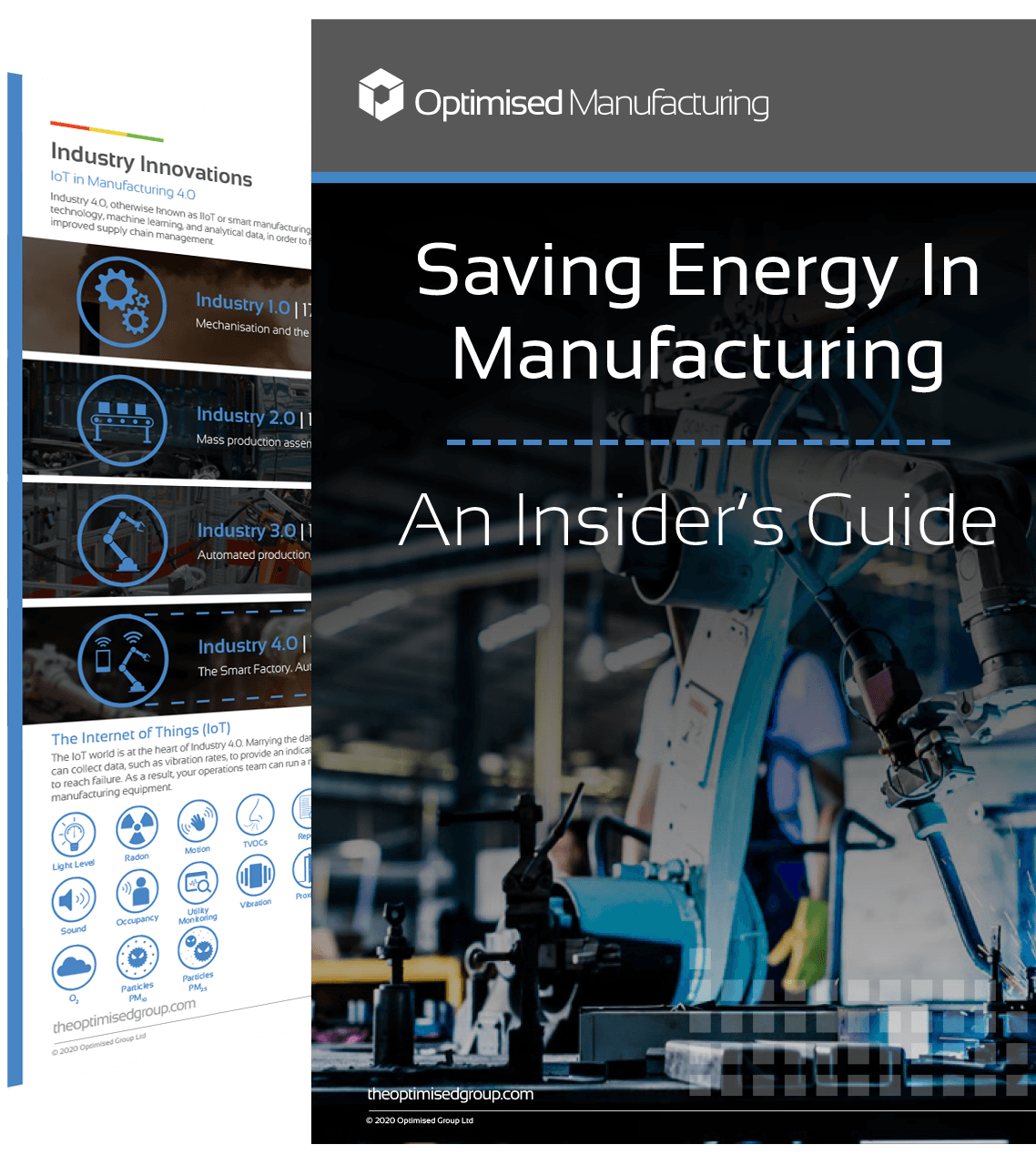6 Ways You Could Use Energy More Efficiently In Manufacturing
In the manufacturing sector, often large-scale buildings with expensive equipment, can leave businesses cornered with a distinct set of challenges when it comes to energy management.
For that reason, we’ve put some heads together and drawn up a list of tips for optimising your energy usage for your manufacturing business.
1. Process Management
Frequently, over-consumption of energy is a result of poorly managed processes.
The majority of manufacturing processes can be fulfilled more energy-efficiently. A common misconception about changing processes is that they can change or compromise what your business produces – which is rarely the case.
Did you know?
A better, more energy efficient, process could deliver a reduction in energy costs of between 5% and 15%.e.
2. Furnaces
Minimising wasted material and improving yield can be a huge stand-alone factor in reducing your furnace’s energy output.
Furnaces are often the biggest culprit for the amount of energy consumed by manufacturing businesses.
Best practice is to compare your furnace’s existing operating conditions against the original design spec and historic data, to determine if yield is below what it should be, as well as next steps to improve it, if required.
- Analyse how your furnace is charged and unloaded
- Align to production schedule
- Recover heat wastage
- Maintain regularly
3. Boiler and Steam Distribution
By incorporating steam generation and distribution more efficiently, manufacturing businesses could reduce their energy use by as much as 30%.
The implementation of regular maintenance, for both steam and hot water boilers, as well as improving the insulation of the surrounding equipment, can enhance energy efficiency, and reduce boiler blowdown.
Check for leaks – wisps of steam creeping out from faulty steam traps, pipework joints and flanges. If not repaired promptly, even the smallest of holes can encourage large amounts of wastage.
Seal off redundant pipework – Ensure redundant pipework is sealed off as close to the boiler as possible to avoid heat losses.
4. Process Utilities
Reduce compressor costs – Electricity is used to produce compressed air, hence why it’s such an expensive utility, and why it can be such a major cause of wastage. Based on use and pressure, compressed air leaking via just a 3mm hole can bump your costs up to around £4,000 per year, whilst an idling compressor can still consume 40% of its full load. Ensure yours is switched off if not in use, particularly at close of play and over weekends.
Cut cooling water flow – The majority of process utilise cooling water to pump around the cooling circuit. Therefore, creating an opportunity to save energy, if the flow is reduced.
Ensure water is cooled to an appropriate temperature – Refrigeration chillers, which are used to cool water, are big energy users. By only cooling water to the required temperature, you could generate more energy savings.
Monitor how you use industrial gases – The production and storage of industrial gases, such as oxygen, nitrogen and argon can be very energy intensive. Endeavour to regularly measure and review your usage.
5. Motors & Drives
Manufacturing businesses widely use motors in order to drive pumps, fans and other essential equipment, which is why they offer great energy saving opportunities.
Use a timer / automatic sensor to control power off – As with all electrical equipment, motors that are left on inadvertently can cause a huge drain on energy.
Reduce fan loads - Minimise the quantity of fresh air brought into buildings, or reduce the gas flows used in various process operations.
Install variable speed drives for motors – A VSD (variable speed drive) is an electronic device used to control the electrical supply to a motor, to ensure it works at its most efficient setting. Just a 20% reduction in motor speed can influence a significant reduction in power requirements of just under 50%.
VSD costs vary dependant on motor rating. For instance, motors installed for SME businesses will incur costs between £750 - £1,500, for the supply and installation.
6. Industrial Buildings
Even though buildings may make up a miniscule portion of your manufacturing site’s energy usage, the potential savings can soon add up.
As most manufacturing buildings sport large square footage and high ceilings, they require significant heating and ventilation, variant on the time of year and manufacturing processes in place.
Look to manage your HVAC systems more effectively, and you could see a 10% reduction in your energy bill, all thanks to a few simple measures:
- Set thermostat to recommended temperature
- Check timer switches frequently
- Get employees on board

HOW CAN YOU MAKE THE MOST OUT OF YOUR WORKSHOP?
Discover inside knowledge on energy efficient manufacturing practice, and how to get ahead of the game, for Industry 4.0.
Contact Us
We will get back to you as soon as possible.
Please try again later.
BOOK YOUR 30-MINUTE ENERGY MANAGEMENT CONSULTATION
Fill in your details below to arrange a complimentary consultation with one of our experts. They will give you bespoke advice to help your business achieve all its energy needs, reducing cost, consumption and carbon.
OUR OFFICES
ASHBY DE LA ZOUCH
1 Ivanhoe Office Park
Ivanhoe Park Way
Ashby de la Zouch
Leicestershire, LE65 2AB
BLACKPOOL
109-112
Lancaster House
Amy Johnson Way
Blackpool, FY4 2RP
BRISTOL
Hanover House
Queen Charlotte Street, Bristol, BS1 4EX
SITTINGBOURNE
The Oast
62 Bell Road
Sittingbourne
Kent, ME10 4HE
About Optimised
Popular Pages
Subscribe
Join the Newsletter - Footer (D)
We will get back to you as soon as possible
Please try again later
Join the Newsletter - Footer (M)
We will get back to you as soon as possible
Please try again later















